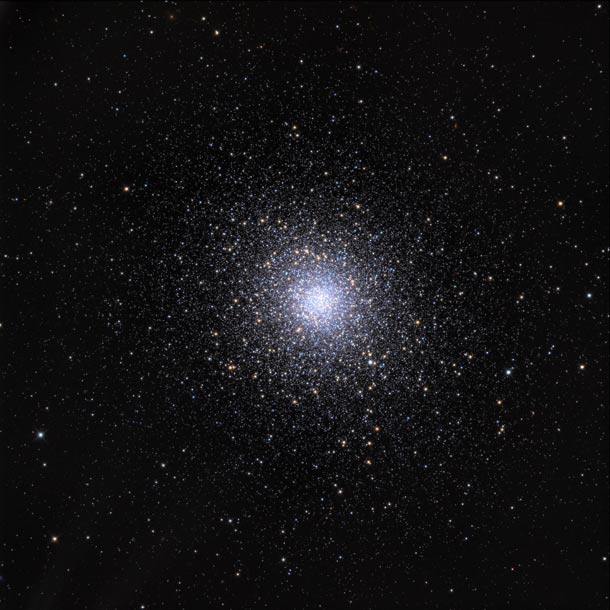Create a free profile to get unlimited access to exclusive videos, sweepstakes, and more!
Globsmacked

Globular clusters are some of the most stunning objects in the sky. Composed of hundreds of thousands of stars, over 150 of these compact beehives orbit our Milky Way galaxy alone. Some are close enough that even through a small telescope they reveal a breathtaking beauty, individual stars sparsely distributed in their outskirts becoming more cramped and crowded until they blur into a generalized smear in the middle.
When you use a bigger telescope to look at them, you get wondrous beauty:
[Click to massively apiaryenate, and you really, really want to.]
This picture is from Adam Block, using the 0.8 meter Schulman Telescope on Mt. Lemmon in Arizona, and shows M5, one of my all-time favorite globulars (I posted a Hubble image of this cluster a while back, too). It's located in the constellation of Serpens, visible over the entire populated region of Earth at this time of year. I spent many nights finding this cluster both when I was younger and also when I was in graduate school and teaching a lab class in observational astronomy. It's a piece of cake to find since it's bright and big. In fact from very dark skies it's just visible to the naked eye, one of the few that are.
This picture from Adam reveals it in its glory. It's roughly 150 - 200 light years across and 25,000 light years away, and you really get a sense of its hundred thousand stars (or more). Globular clusters like this are very old - 12 billion years or so. Any star in M5 with a mass of more than the Sun would have died long ago, turning into a red giant, blowing away its outer layers, and becoming a faint, hot, white dwarf. Even some lower mass stars have become red giants - you can pick them out pretty easily in the picture - and only stars with significantly lower mass are still chugging along, merrily fusing hydrogen into helium in their cores like the Sun does.
The cluster also contains over a hundred "blue straggler" stars - stars which are surprisingly blue given their age. These were a mystery for decades, but it's now understood that they're the result of binary stars, where one star is feeding off the material from another, and also from actual stellar collisions, where two stars physically collide and merge! Collisions like that are so rare they're non-existent in the volume of space our Sun occupies, but globular clusters have a lot of stars tightly packed into a small region. Collisions are more common, and can result in a star that looks much younger than it really is.
There are so many reasons to love a good globular. I enjoy their relative simplicity - they're only made of stars! - and structural symmetry, and how they can be observed with everything from your eyeballs to the most sophisticated telescopes on or above the Earth. And if you read about them, their physical history, composition, and orbits, you'll find there is a vast amount to know about them, and a vast amount yet to learn. To my scientifically curious mind, that makes them just about the perfect object for study.
And, of course, they are surpassingly beautiful. That never hurts.
Image credit: Adam Block/Mount Lemmon SkyCenter/University of Arizona
Related Posts:
- Desktop Project Part 12: The galactic deep diver M9
- Desktop Project Part 3: The massive massiveness of M54
- Gorgeous globular hides hundreds of rejuvenated stars
- Lonely sentinel of the galaxy



























